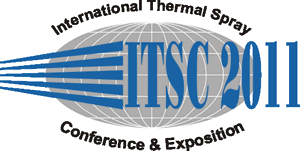
|
| Abstract No.: |
|
Scheduled at:
|
Thursday, September 29, 2011, Saal C2.1 4:25 PM
Medical Industry 2
|
|
| Title: |
Thermal spraying of bioactive polymer coatings for orthopaedic applications
|
|
| Authors: |
Ahmed Chebbi* / School of Mechanical and Manufacturing Engineering, Dublin City University, Ireland
Joana Podporska/ National Centre for Plasma Science and Technology, Materials Processing and Research Centre, Ireland
J. Stokes/ National Centre for Plasma Science and Technology, Materials Processing and Research Centre, Ireland
|
|
| Abstract: |
Hydroxyapatite (HA) bioceramics are proven to be an ideal material for bone replacement and repair applications, due to their similarity in chemical composition to bone. Plasma spraying has been commonly used to apply hydroxyapatite coatings onto metallic implants for use in orthopaedic surgeries. The addition of HA coatings was successful in improving the performance of titanium implants, generally made of Ti6Al4V titanium alloy. However, this type of implant has shown some limitations with regards to mechanical (implant loosening) and biological (infections) behaviours.
This research aims at introducing new biodegradable/non-biodegradable materials (biopolymers) to the existing bare Titanium and/or HA-Titanium combination in order to overcome some of the limitations mentioned above. Biopolymers can act as drug carriers for a localised drug release following implantation; they can also have a structural role by improving the mechanical performance of implants at the bone/implant interface. The new proposed materials consisted of biodegradable and non-biodegradable polymers that are widely used as drug delivery systems (used separately or as a composite). These polymers were: polycaprolactone, polymethylmethacrylate and polyhydroxybutyrate 98%/ polyhydroxyvalerate 2%. The method used to apply the polymeric materials was oxygen/acetylene flame spraying, due to its superior mechanical advantages over other techniques. Screening tests were used to determine the range of spraying parameters suitable for each polymer, followed by a Design of Experiment phase in order to obtain the optimised flame spraying parameters. For this optimisation stage, the tested polymers were sprayed on bare titanium substrates only. The second phase of this study involved plasma spraying HA onto Ti discs using optimised parameters. The optimised polymer coatings were then flame sprayed onto the HA/Ti compound. A range of mechanical and biological characterisation were then performed in order to study the suitability of the proposed polymers for such an application and the effect of thermal spraying on their bioactivity. FTIR data showed that minor chemical degradation affected the biodegradable polymers. Contact angle measurements showed that the flame-sprayed biopolymer coatings were more hydrophilic than bare titnium implant, which is a precursor to good cell adhesion. Biological assessment showed that the flame spraying technique did not affect the bilogical performance of the biopolymers being investigated.
|
|
